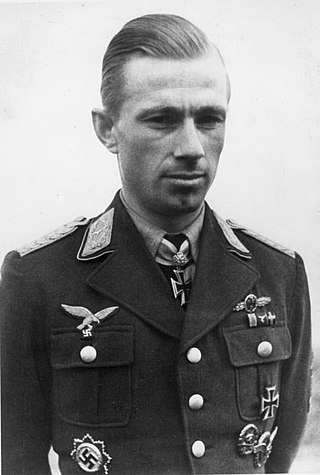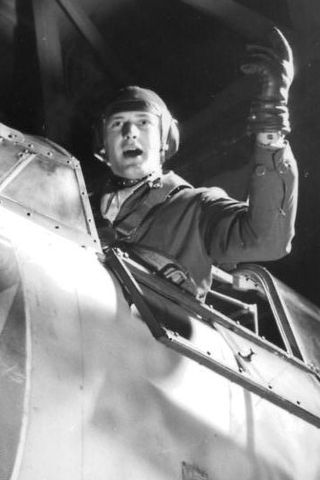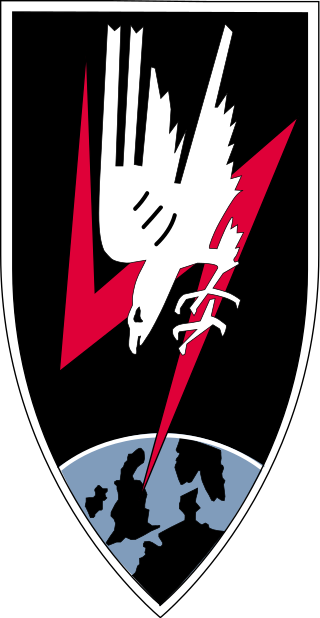
Heinz-Wolfgang Schnaufer was a German Luftwaffe night-fighter pilot and the highest-scoring night fighter ace in the history of aerial warfare. A flying ace is a military aviator credited with shooting down five or more enemy aircraft during combat. All Schnaufer's 121 victories were claimed during World War II, mostly against British four-engine bombers, for which he was awarded the Knight's Cross of the Iron Cross with Oak Leaves, Swords and Diamonds, Germany's highest military decoration at the time, on 16 October 1944. He was nicknamed "The Spook of St. Trond", from the location of his unit's base in occupied Belgium.

Heinrich Prinz zu Sayn-Wittgenstein-Sayn was a German night fighter pilot and flying ace during World War II. At the time of his death, Sayn-Wittgenstein was the highest-scoring night fighter pilot in the Luftwaffe and still the third highest by the end of World War II, with 83 aerial victories to his credit.

Helmut Lent was a German night-fighter ace in World War II. Lent shot down 110 aircraft, 102 of them at night. Born into a devoutly religious family, he showed an early passion for glider flying; against his father's wishes, he joined the Luftwaffe in 1936. After completing his training, he was assigned to the 1. Squadron, or Staffel, of Zerstörergeschwader 76 (ZG 76), a wing flying the Messerschmitt Bf 110 twin-engine heavy fighter. Lent claimed his first aerial victories at the outset of World War II in the invasion of Poland and over the North Sea. During the invasion of Norway he flew ground support missions before he was transferred to the newly established Nachtjagdgeschwader 1 (NJG 1), a night-fighter wing.

Heinz Strüning was a German Luftwaffe military aviator during World War II, a night fighter ace credited with 56 nocturnal aerial victories claimed in 280 combat missions.
Nachtjagdgeschwader 1 (NJG 1) was a German Luftwaffe night fighter-wing of World War II. NJG 1 was formed on 22 June 1940 and comprised four Gruppen (groups). NJG 1 was created as an air defence unit for the Defence of the Reich campaign; an aerial war waged by the Luftwaffe against the bombing of the German Reich by RAF Bomber Command and the United States Air Force. In 1941 airborne radar was introduced with radar operators, and standardised in 1942 and 1943. Consequently, a large number of German night fighter aces existed within NJG 1.
Nachtjagdgeschwader 2 was a German Luftwaffe night fighter and night intruder wing during World War II.

Nachtjagdgeschwader 3 was a Luftwaffe night fighter-wing of World War II. NJG 3 was formed on 29 September 1941 in Stade from Stab./Zerstörergeschwader 26.

Günther Radusch was a World War II German Luftwaffe pilot and wing commander. As a fighter ace, he claimed 65 enemy aircraft shot down in over 140 combat missions. He claimed one victory in the Spanish Civil War. During World War II, he was credited with 64 aerial victories in Defense of the Reich all of which claimed at night and includes the destruction of 57 four-engined bombers.

Herbert Heinrich Otto Lütje was a German military aviator, a wing commander in the Luftwaffe during World War II and an officer in the postwar German Air Force. As a fighter ace, he was credited with 50 aerial victories claimed in 247 combat missions. His 47 nocturnal claims made him the twentyfourth most successful night fighter pilot in the history of aerial warfare. All of his victories were claimed in Defense of the Reich missions, the majority at night against the Royal Air Force's (RAF) Bomber Command and three daytime claims, one over a United States Army Air Forces (USAAF) Boeing B-17 Flying Fortress bomber and two Lockheed P-38 Lightning fighter aircraft.

Paul Semrau was a German Luftwaffe military aviator and wing commander during World War II. As a night fighter ace, he is credited with 46 aerial victories claimed in 350 combat missions. All of his victories were claimed over the Western Front against the Royal Air Force's (RAF) Bomber Command.
Rudolf Schoenert was the seventh highest scoring night fighter flying ace in the German Luftwaffe during World War II. He was also a recipient of the Knight's Cross of the Iron Cross with Oak Leaves. The Knight's Cross of the Iron Cross and its higher grade Oak Leaves was awarded to recognise extreme battlefield bravery or successful military leadership.

Egmont Prinz zur Lippe-Weißenfeld was a Luftwaffe night fighter flying ace of royal descent during World War II. A flying ace or fighter ace is a military aviator credited with shooting down five or more enemy aircraft during aerial combat. Prinz zur Lippe-Weißenfeld was credited with 51 aerial victories, all of them claimed in nocturnal combat missions.
Nachtjagdgeschwader 5 was a Luftwaffe night fighter-wing of World War II. NJG 5 was formed on 30 September 1942 in Döberitz.

Georg-Hermann Greiner was a Luftwaffe night fighter ace who served during World War II. Greiner was recipient of the Knight's Cross of the Iron Cross with Oak Leaves—the fourth highest German award by war's end. He was also a squadron commander in the prestigious Nachtjagdgeschwader 1, the most successful night fighter interceptor unit of any nation in the history of aerial warfare.
Leopold "Poldi" Fellerer was a Luftwaffe night fighter ace and recipient of the Knight's Cross of the Iron Cross during World War II. The Knight's Cross of the Iron Cross was awarded to recognise extreme battlefield bravery or successful military leadership.
Ludwig Meister was a Luftwaffe night fighter ace and recipient of the Knight's Cross of the Iron Cross during World War II. The Knight's Cross of the Iron Cross was awarded to recognise extreme battlefield bravery or successful military leadership. During his career he claimed 39 aerial victories, 38 of them at night.
Lothar Linke was a German Luftwaffe night fighter pilot and recipient of the Knight's Cross of the Iron Cross during World War II. Linke claimed 27 aerial victories, 24 of them at night. On 14 May 1943 Linke and his crew were forced to bail out after engine failure of their Messerschmitt Bf 110. He struck the tail end of the plane and was killed. On 19 September 1943, he was posthumously awarded the Knight's Cross.

Operation Gisela was the codename for a German military operation of the Second World War. Gisela was designed as an aerial intruder operation to support the German air defence system in its night battles with RAF Bomber Command during the Defence of the Reich campaign. It was the last major operation launched by the Luftwaffe Nachtjagdgeschwader during the conflict.
Nachtjagdgeschwader 6 was a Luftwaffe night fighter-wing of World War II. NJG 6 was formed in May 1943.
Wolfgang Thimmig was a German Luftwaffe night fighter during World War II. By the end of the war he had achieved 24 aerial victories, reached the rank of Oberstleutnant, and was Geschwaderkommodore for NJG 2, having previously been the Kommodore for NJG 4.











